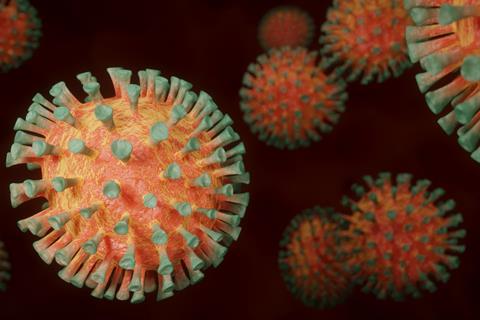Infection with Covid-19 can reduce the number of bacterial species in a patient’s gut, with the lesser diversity creating space for dangerous microbes to thrive, a new study has found.

The study builds on the realisation that widespread use of antibiotics to fight infections with disease-causing bacteria in recent decades, by killing off species most vulnerable to available drugs, has left in place more species that are resistant to antibiotics. In addition, disruptions in gut bacterial ratios have previously been linked to more severe COVID-19.
However, researchers say, it has remained unclear until now which came first, the coronavirus infection disrupting the gut microbiome or an already weakened gut making the body more vulnerable to the virus. The new study appears to favour the former explanation. The new investigation also revealed that antibiotic-resistant species can escape into the bloodstream, putting patients at greater risk of life-threatening secondary infections.
Led by researchers at NYU Grossman School of Medicine, the investigation involved 96 men and women hospitalized with COVID-19 in 2020 in New York City and in New Haven, Conn.
Results showed that the majority of patients had low gut microbiome diversity, with a full quarter dominated by a single type of bacteria. At the same time, populations of several microbes known to include antibiotic-resistant species increased, possible due to widespread antibiotic use early in the pandemic.
These antibiotic-resistant bacteria found in the gut were also observed to have migrated into the bloodstream in 20% of patients. The study authors note that further research is needed to uncover why this group was at higher risk for a secondary infection while others remained protected.
“Our findings suggest that coronavirus infection directly interferes with the healthy balance of microbes in the gut, further endangering patients in the process,” said study co-senior author and microbiologist Ken Cadwell, PhD.
“Now that we have uncovered the source of this bacterial imbalance, physicians can better identify those coronavirus patients most at risk of a secondary bloodstream infection.”
The new study is the first to show that the coronavirus infection alone, and not the initial use of antibiotics to treat the disease as some had thought, damages the gut microbiome, said Cadwell, who is also a professor in the Departments of Microbiology and Medicine at NYU Langone Health.
He said the study provides the first evidence that the very same bacteria in the gut are also entering the bloodstream of patients, causing dangerous infections.
The report is published in the journal Nature Communications.
Methods used
For the investigation, researchers first infected dozens of mice with the coronavirus and analyzed the makeup of bacterial species in their stool samples. This step allowed them to untangle whether the coronavirus could directly disrupt the microbiome independently of hospitalisation and treatment.
Next, they collected stool samples and blood tests from COVID-19 patients at NYU Langone Health and Yale University hospitals to assess gut microbe composition and presence of secondary infection. If any bacteria group made up a majority of the bacteria living in the gut, they were considered dominant.
“Our results highlight how the gut microbiome and different parts of the body’s immune system are closely interconnected,” said study senior author Jonas Schluter, PhD, an assistant professor in the Department of Microbiology at NYU Langone and a member of its Institute for Systems Genetics.
“An infection in one can lead to major disruptions in the other.”
Schluter cautioned that since the patients received different kinds of treatments for their illness, the investigation could not entirely account for all factors that may have contributed to the disruption of their microbiome and worsen their disease.
According to Schluter, the study team next plans to examine why certain microbial species are more likely to escape the gut during COVID-19. The researchers say they also intend to explore how different microbes interact, which may contribute to this migration into the bloodstream.







No comments yet